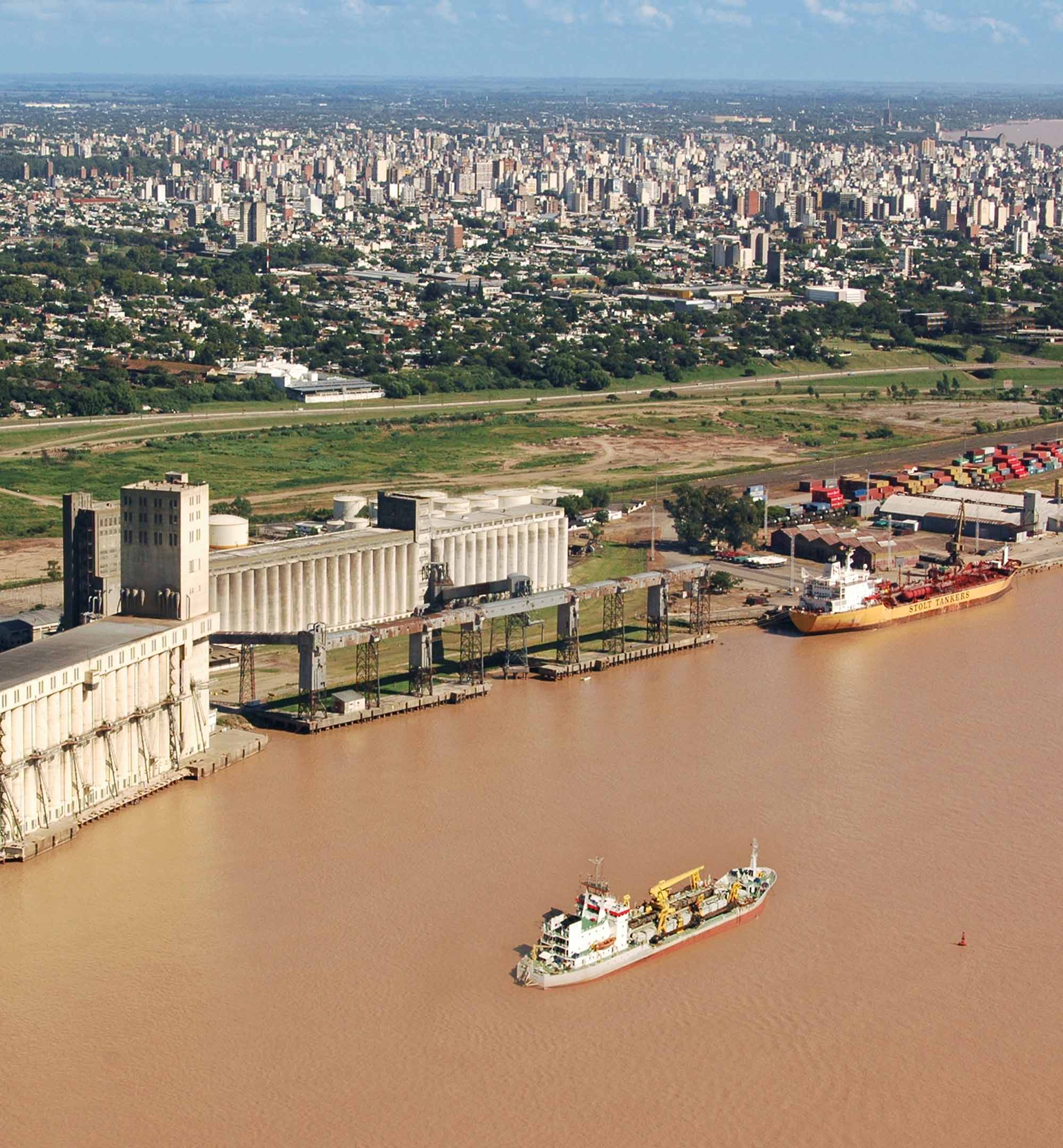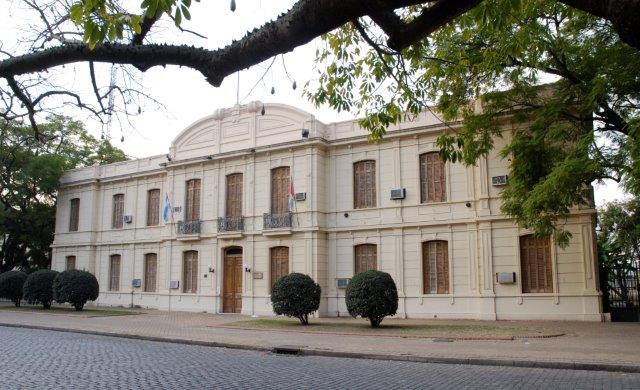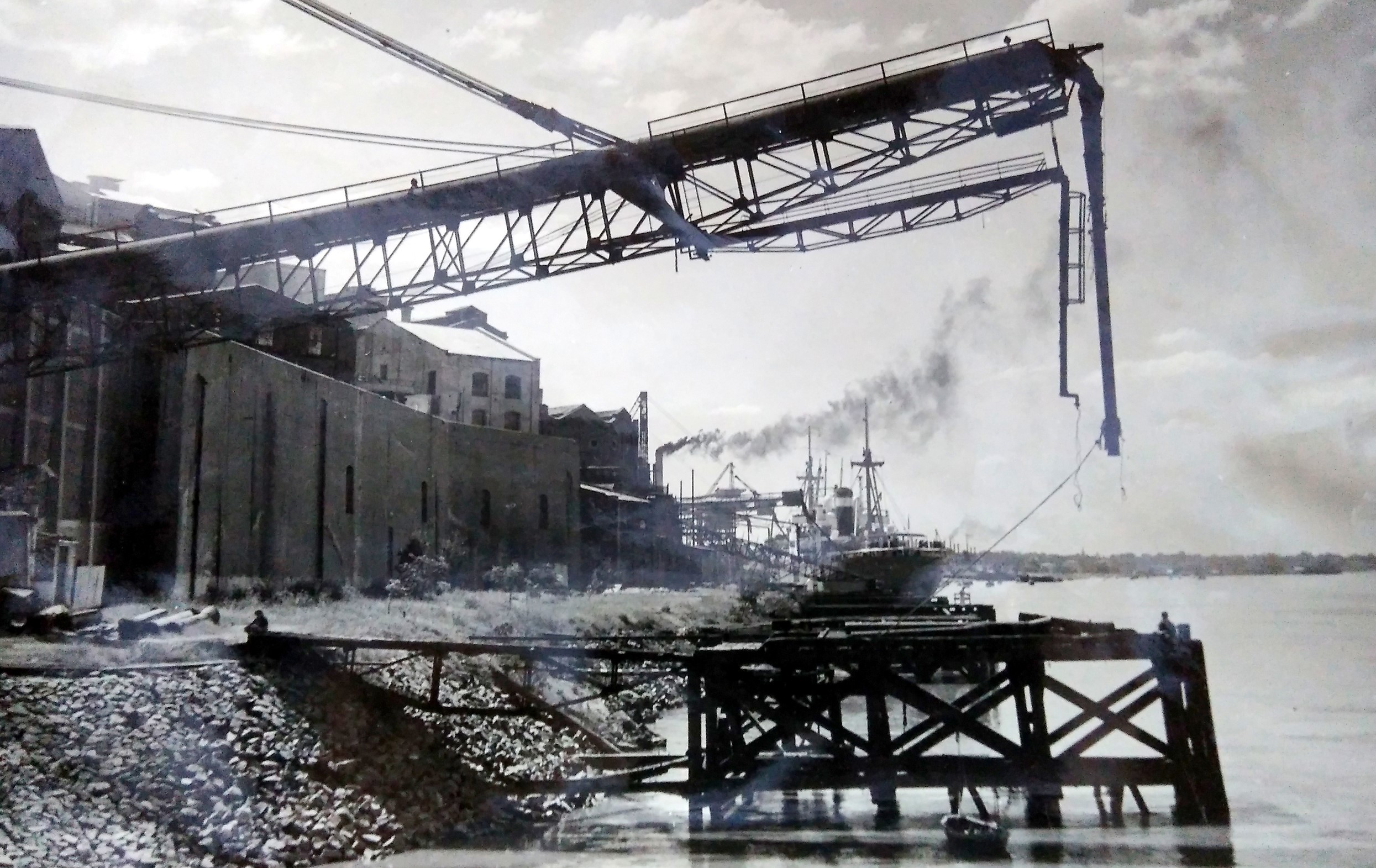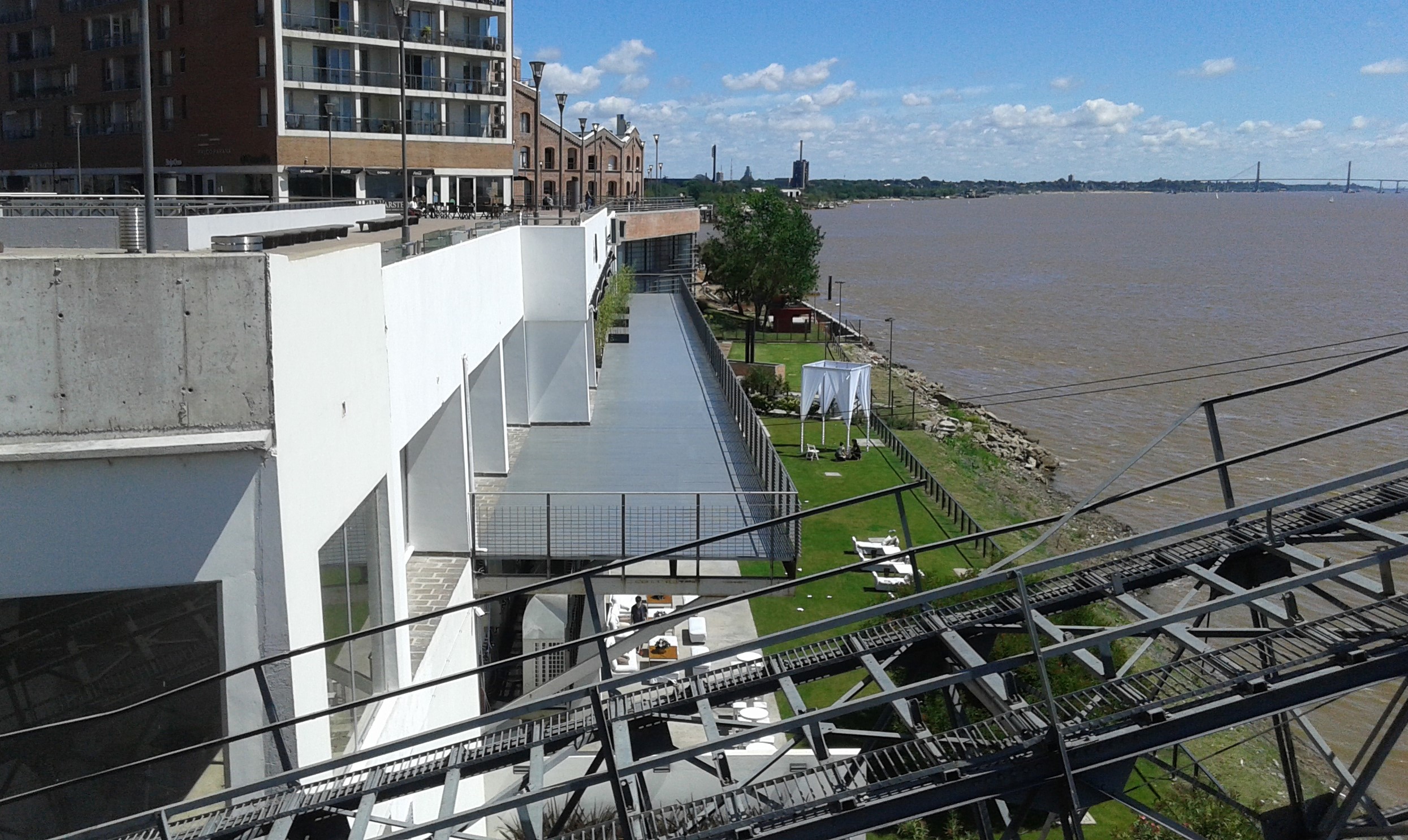In the port organizations of the Republic of Argentina there is historical documentation of great value that needs to be identified for its enhancement and conservation, using the most advanced digital technologies for preservation, organization and consultation. This has been expressed by researchers and specialists in a series of colloquiums and conferences held since 2014.
In view of the complexity of the challenge, the available economic resources and the considerable physical distances that separate the country’s main port cities (especially overseas, maritime and river cities), those professionals decided to work in a network using computer supports, inviting scholars from different disciplines and actors of the port community. The main interest was to access, rescue, learn about, and disseminate the existence of this cultural heritage whose documentation arose as necessary for various approaches to the historical and present dynamics of ports and their relationship with the development of cities and regions.
This is how the Regional Port Cities Nucleus was constituted, within the framework of the Institute of Economic, Social and International Studies (IDEHESI) dependent on the National Council of Scientific and Technical Research of the Argentine Republic (CONICET), (hereinafter CPR Nucleus), with a marked transdisciplinary and interistitutional profile, dialoguing and cooperating with port managers [1].
It was set by Rosario, and this was no accident. The city is located in the center of one of the most important port complexes of the Mercosur countries, -on the Paraná River, in the fluvial axis of the Silver Basin-, through which 80% of Argentina’s cereal production is exported. From its origins as a ferroportuaria city in the XIX century, it was distinguished for facilitating the articulation of regional and interprovincial policies, in diverse dimensions, especially in the cultural, social, and economic ones [2].
Aerial view of the port and city of Rosario, on the Paraná River. Sector of the Bulk Terminal of the port. Year 2012. Photograph courtesy of María Andrea Babsia.
Currently, the CPR Nucleus brings together more than fifty professionals (mostly teachers and researchers from public and private universities) from Argentina, but also from Brazil, Chile and France.
It began by testing collaboration strategies in this sense with scholars and authorities of the public ports of Santa Fe (with the sponsorship and collaboration of the then Directorate of Ports of that province), with colleagues from other cities in the country, and with those abroad already had the technical experience required for the digitization of such documentation, and the creation of virtual environments capable of recreating the port past.
The Ente Administrador del Puerto de Rosario (ENAPRO), created 25 years ago by the Ley Nacional de Puertos (National Ports Law), which created the provincialization of national terminals and entrusted their administration to autonomous management entities (a desire pursued by the people of Rosario since the 19th century), became a bridge between the sectors involved in port operations, the representatives of the region’s economic and productive interests and culture [3].
ENAPRO opened its doors to the CPR Nucleus and from there began various joint actions in favor of the port-city integration. Documentary collections from the 20th century were located and a room was set aside for their conservation. Researchers of the Nucleus carried out a preliminary digitization of rescue and cataloguing.
Building where the Administrator Entity of the Port of Rosario has its headquarters. ENAPRO Press Photography.
Four years ago, the CPR Nucleus held meetings in the cities of Punta Alta-Bahía Blanca, Quequén, Mar del Plata, Campana-Zárate, Ciudad Autónoma de Buenos Aires, Villa Constitución, Rosario, Santa Fe, and Mendoza (Puerto Seco). It held four colloquiums, an updating seminar, two workshops on digital tools applied to the preservation of port heritage, presented roundtables in various days, and maintains virtual platforms in social networks.
The results of these experiences were shared at the Meeting of the Argentine Port Community in the city of Buenos Aires, in 2018, with the presence of national and provincial authorities of the area, heads of public and private port entities, and the most diverse actors involved in the operation. On that occasion, the proposal “To know ourselves is to integrate. Identity and Historical Heritage of Argentine Port Cities”, understanding heritage as a key factor in identity, integration (inside and outside the port community) and national development.
At the same time as ENAPRO was created, the transfer of port facilities to areas far from the central zone took place in Rosario -as in other cities of the world-, giving rise to a process of urbanistic reforms and the transfer of port and national railway lands to the province and the Municipality. In what were storage sheds, maneuvering playons and imposing silos, parks, walks, cultural centers, gastronomic proposals, etc. were created that in a very short time modified “the image of the city”, and the recreational practices of the inhabitants, becoming, in addition, a motive of tourist attraction.
However, the port landscape that dominated the city until the 90’s of the twentieth century was displaced by another that lacks a historical script that allows to value integrally and in its right dimension what was a feverish logistic area, source of work, for a very wide hinterland that surpassed the limits of the Argentine Republic.
Neither does it have a museological and archival space capable of physically housing, in appropriate conditions, valuable maps, files and existing port bibliography. We are aware of the concern of the authorities in this regard and invited by them we participate in meetings tending to dialogue on projects that are in the Secretariat of Planning of the Municipality.
Sector of the denominated “North Port” of Rosario, “before and after”. The first photograph corresponds to the year 1950, courtesy of Archivo Diario La Capital de Rosario. The second, the same sector at present, converted into a convention center. Photograph of the author.
The members of the CPR Nucleus, in their respective port cities, carried out their own survey corroborating the magnitude and transcendence of the documentary collections, works of art, and diverse traces of the past existing in the interior of the entities, port consortiums, the General Administration of Ports, and the National Direction of Port Constructions and Navigable Ways, that await their cataloguing and digitalization.
In 2010, the European Ports Organization approved a “Code of good practices for the social integration” of ports, stating that “The experience of the port begins in the city”, with the creation of centers dedicated specifically to reflect on ports, or through cultural institutions such as museums or exhibition spaces, and from there could attract visitors to the port [4].
Universities, academies, research and training institutes, museums, archives, libraries, networks and cultural centres together with the various actors of the port community, with the powerful competition of the specialised press, journalistic media and social networks, are therefore called to a long-term task: the reunion of citizens with their port identity from which to reflect and cooperate for a sustainable port-city-region development.
In order to be able to contribute with innovative tools capable of articulating the actors in such a task, the experience of one of the most active international centers in digital humanities has been used: The François Viète Center of Epistemology and History of Science and Technology, created at the University of Nantes, France, in 1994, through the resident team at the University of Western Brittany in the city of Brest (CFV-UBO).
For the last four years, the members of the “Gaulish” team together with the CPR Nucleus have been working, among other aspects, on the creation of a common technological platform for documentation and archives on port heritage based on the semantic web and an ontology resulting from the ANY-ARTEFACT model (Laubé-Rohou) extended to the development of the city-port relationship in the human and social sciences to ensure interoperability with other existing digital libraries [5].
In addition, interactive virtual recreations have begun to be experimented, taking for example the operation of machinery used for the construction of ships and that can be extended to other industrial products. In addition, a decision-making guide is drawn up for parties interested in heritage management that can contribute to the decision-making of the agents of port areas for the management of their heritage and its valorisation from a socio-economic point of view (communications, town planning, housing, tourism, infrastructure works, environmental impact, cultural promotion, technology applied to development, etc.) [6].
The Argentine proposal is to understand the ports in their urban and regional dimension, as computers and generators of identity and development and therefore require an episteme that contemplates the paradigm of complexity, since the port, urban and regional spaces are each in itself, complex social structures that condition their evolution and which in turn are modified by political-ideological and socio-economic transfers and by the cultural circulation that takes place in the historical future [7]. Its knowledge cannot be reached from a disciplinary constraint, but through interdisciplinary approaches that consider “border zones” or “intersections” between disciplinary fields.
In this way, the CPR Nucleus opens up a theoretical flow that transversally links contributions framed in naval, maritime, fluvial, port, technological, economic, political, social, cultural, urbanistic, logistic, anthropological, archaeological, museological and international relations issues, among others, and that with a computer ontology can provide results through interfaces and descriptors.
On the other hand, the French researchers also consider the port space as a complex technological macrosystem and start from similar theoretical postulates coming from renowned port geographers of the last decades of the 20th century and the beginning of the 21st century, as well as from historians of science and technology (T.P. Hugues).
To advance in the application of these theoretical and methodological perspectives, -which the members of the teams of the two countries have studied and debated in the last years as a result of the joint work-, to the field of port studies involves proposing to overcome both simplifications and local approaches, mechanical, lacking in connectivity, which do not dialogue with the contributions of various disciplines.
In addition to generating scientific knowledge, the effect of reflection on the value of the preservation of port heritage and the actions taken to ensure it, the ANY-ARTEFACT ontological system seeks to collect, link and draw up a broad repertoire of institutional actors committed to the protection of all cultural goods and traces of human intervention in urban-port spaces and the convergence of the different sectors, all of whom share a common interest in the integrated development of regions and ports.
Notes
[1] See Blog: https://ciudadport.hypotheses.org/author/ciudadport
[2] PER+10, Rosario Metropolitana 2018, Segundo Plan Estratégico de Rosario, Borsellino Impresos, Rosario, 2009.
[3] Joan Alemany Llovera, Ricardo Aguiar, Carlos Dalfano, Diego M. Estevez, Omar D. Laferrara, Ernesto R. Seselovsky, Estudio para el desarrollo del puerto de Rosario, Fundación Banco Municipal de Rosario, Rosario, 1995, p. 201.
[4] European Sea Ports Organisation, Valenciaport Foundation and Valencia Port Authority, Code of good practices for the social integration of ports, Valencia, 2010.
[5] Bruno Rohou. Modélisation des ports de Brest (France), Rosario et Mar del Plata (Argentine) en tant que macro systèmes technologiques complexes : application à la modélisation des connaissances pour l’histoire des sciences et des techniques. Histoire. Université de Bretagne occidentale – Brest, 2018. French. 2018BRES0103⟩ : 2018BRES0103⟩. ⟨tel-02106927v2⟩.
[6] Marie Morgane Abiven. Humanités numériques et méthodes de conservation et de valorisation des patrimoines maritimes. L’exemple des arsenaux de Brest et Venise. CFV , IMT, labsticc.
[7] Beatriz Figallo, Josefa García de Ceretto. The history of the present time. History and epistemology in complex territories. Department of History of the Faculty of Philosophy and Letters of the Argentine Catholic University, Buenos Aires, 2019.
Head Image: The sector “North Port” of Rosario. Year 1950. Photograph courtesy of Archivo Diario La Capital de Rosario.
Herramientas digitales para el patrimonio cultural portuario de la Argentina
En los organismos portuarios de la República Argentina existe documentación histórica de gran valía que requiere ser identificada para su puesta en valor y conservación, recurriendo a las más avanzadas tecnologías digitales para su preservación, organización y consulta. Así lo han manifestado investigadores y especialistas en una serie de coloquios y jornadas propiciadas desde 2014.
En atención a la complejidad del desafío, los recursos económicos disponibles y a las considerables distancias físicas que separan a las principales ciudades portuarias del país (especialmente a las de ultramar, marítimas y fluviales), aquellos profesionales decidieron trabajar en red valiéndose de soportes informáticos, convocando a estudiosos de distintas disciplinas y actores de la comunidad portuaria. El principal interés fue acceder, rescatar, conocer, y difundir la existencia de ese patrimonio cultural cuya documentación surgía como necesaria para diversos abordajes sobre la dinámica histórica y presente de los puertos, y su relación con el desarrollo de las ciudades y regiones.
Así se constituyó el Núcleo de Ciudades Portuarias Regionales, en el marco del Instituto de Estudios Económicos Sociales e Internacionales (IDEHESI) dependiente del Consejo Nacional de Investigaciones Científicas y Técnicas de la República Argentina (CONICET), (en adelante Núcleo CPR), con un marcado perfil transdisciplinario e interistitucional, dialogando y cooperando con los gestores portuarios [1].
Se fijó por sede Rosario, y esto no fue casual. La ciudad se encuentra en el centro de uno de los complejos portuarios más importantes de los países del Mercosur, -sobre el río Paraná, en el Eje fluvial de la Cuenca del Plata-, por el que se exporta el 80% de la producción cerealera argentina. Desde sus orígenes como ciudad ferroportuaria en el siglo XIX, se distinguió por facilitar la articulación de políticas regionales e interprovinciales, en diversas dimensiones, especialmente en las culturales, sociales, y económicas [2].
Vista aérea del puerto y la ciudad de Rosario, sobre el río Paraná. Sector de la Terminal Granelera del puerto. Año 2012. Fotografía gentileza de María Andrea Babsia.
Actualmente el Núcleo CPR reúne a más de cincuenta profesionales (en su mayoría docentes e investigadores de universidades públicas y privadas) de la Argentina pero también de Brasil, Chile y Francia.
Se comenzó por ensayar estrategias de colaboración en tal sentido con estudiosos y autoridades de los puertos públicos de Santa Fe (con el auspicio y colaboración de la entonces Dirección de Puertos de esa provincia); con colegas de otras ciudades del país, y con quienes en el exterior ya disponían de la experiencia técnica requerida para la digitalización de esa documentación, y la creación de entornos virtuales capaces de recrear el pasado portuario.
El Ente Administrador del Puerto de Rosario (ENAPRO), creado hace 25 años por la Ley Nacional de Puertos que gestó la provincialización de los terminales nacionales y encargo su administración a entes de gestión autonómica (un anhelo perseguido por los rosarinos desde el siglo XIX), se convirtió en un puente de relación entre los sectores involucrados en la operatoria portuaria, los representantes del interés económico y productivo de la región y la cultura [3].
El ENAPRO abrió sus puertas al Núcleo CPR iniciándose desde allí distintas acciones conjuntas a favor de la integración puerto-ciudad. Se localizaron fondos documentales del siglo XX y se destinó una sala a su conservación. Investigadores del Núcleo llevaron adelante una digitalización preliminar de rescate y catalogación.
Edificio donde tiene su sede el Ente Administrador del Puerto de Rosario. Fotografía Prensa ENAPRO.
Desde hace cuatro años el Núcleo CPR realizó encuentros en las ciudades de Punta Alta-Bahía Blanca, Quequén, Mar del Plata, Campana-Zárate, Ciudad Autónoma de Buenos Aires, Villa Constitución, Rosario, Santa Fe, y Mendoza (Puerto Seco). Concretó la celebración de cuatro coloquios, un seminario de actualización, dos talleres de herramientas digitales aplicados a la preservación del patrimonio portuario, presentó mesas alusivas en diversas jornadas, y mantiene plataformas virtuales en redes sociales.
Los resultados de estas experiencias fueron compartidos en el Encuentro de la Comunidad Portuaria Argentina en la ciudad de Buenos Aires, en 2018, con la presencia de autoridades nacionales y provinciales del área, titulares de entes portuarios públicos y privados, y los más diversos actores que hacen a la operatoria. En esa oportunidad se presentó la propuesta “Conocernos es integrarnos. Identidad y Patrimonio Histórico de las Ciudades Portuarias Argentinas”, entendiendo al patrimonio como un factor clave en la identidad, la integración (dentro y fuera de la comunidad portuaria) y el desarrollo nacional.
Contemporáneamente a la creación del ENAPRO, se verificó en Rosario -al igual que en otras ciudades del mundo-, el traslado de las instalaciones portuarias a áreas alejadas de la zona central dando lugar a un proceso de reformas urbanísticas y el traspaso de los terrenos portuarios y ferroviarios nacionales a la provincia y al Municipio. En lo que fueron galpones de almacenamiento, playones de maniobras e imponentes silos se crearon parques, paseos, centros culturales, propuestas gastronómicas, etc. que modificó en muy poco tiempo “la imagen de la ciudad”, y las prácticas recreativas de los habitantes, convirtiéndose, además, en un motivo de atracción turística.
Sin embargo, el paisaje portuario que dominó la ciudad hasta los 90 del siglo XX fue desplazado por otro que carece de un guion histórico que permita valorar integralmente y en su justa dimensión lo que fuera una febril área logística, fuente de trabajo, para un amplísimo hinterland que superó los límites de la República Argentina.
Tampoco se dispone de un espacio museológico y archivístico capaz de albergar físicamente, en condiciones apropiadas, valiosas planotecas, mapotecas, legajos, y bibliografía portuaria existente. Nos consta de la preocupación de las autoridades al respecto e invitados por ellas participamos de reuniones tendientes a dialogar sobre proyectos que se encuentran en la Secretaría de Planeamiento de la Municipalidad.
Sector del denominado “Puerto Norte” de Rosario, “antes y después”. La primera fotografía corresponde al año 1950, gentileza del Archivo Diario La Capital de Rosario. La segunda, el mismo sector en la actualidad, convertida en un centro de convenciones. Fotografía del autor.
Los integrantes del Núcleo CPR, en sus respectivas ciudades portuarias, efectuaron su propio relevamiento corroborando la magnitud y trascendencia de los fondos documentales, obras de artes, y diversas huellas del pasado existentes en el interior de los entes, consorcios portuarios, la Administración General de Puertos, y la Dirección Nacional de Construcciones Portuarias y Vías Navegables, que aguardan su catalogación y digitalización.
En el año 2010, la Organización Europea de Puertos aprobó un “Código de buenas prácticas para la integración social” de los mismos, afirmando que “La experiencia del puerto comienza en la ciudad”, con la creación de centros dedicados específicamente a reflexionar sobre los puertos, o a través de instituciones culturales como museos o espacios expositivos, y desde allí se podría atraer los visitantes hacia el puerto [4].
Universidades, academias, institutos de investigación y formación, museos, archivos, bibliotecas, redes y centros culturales junto a los diversos actores de la comunidad portuaria, con el poderoso concurso de la prensa especializada, medios periodísticos y redes sociales, están por lo tanto llamadas a una tarea de largo aliento: el reencuentro de los ciudadanos con su identidad portuaria desde donde reflexionar y cooperar a un desarrollo puerto-ciudad-región sustentable.
A los fines de poder contribuir con herramientas innovadoras capaces de articular a los actores en tal cometido se ha recurrido a la experiencia de uno de los centros internacionales más activos en humanidades digitales: El Centro François Viète de Epistemología e Historia de la Ciencia y la Tecnología, creado en la Universidad de Nantes, Francia, en 1994, a través del equipo residente en la Universidad de Bretaña Occidental en la ciudad de Brest (CFV-UBO).
Desde hace cuatro años, los integrantes del equipo “galo” junto al Núcleo CPR trabajan, entre otros aspectos, en constituir una plataforma tecnológica común de documentación y archivos sobre el patrimonio portuario basada en la web semántica y una ontología resultante del modelo ANY-ARTEFACT (Laubé-Rohou) ampliada a los temas de desarrollo de la relación ciudad-puerto en ciencias humanas y sociales para asegurar la interoperabilidad con otras bibliotecas digitales ya existentes [5].
Además, se ha comenzado a experimentar recreaciones virtuales interactivas, tomando por ejemplo el funcionamiento de maquinarias utilizadas para la construcción de barcos y que pueden extenderse a otros productos industriales. Asimismo, se elabora una guía de toma de decisiones para las partes interesadas en la gestión del patrimonio que pueda contribuir a la toma de decisiones de los agentes de las zonas portuarias para la gestión de su patrimonio y su valorización desde un punto de vista socioeconómico (comunicaciones, urbanismo, vivienda, turismo, obras de infraestructura, impacto ambiental, promoción cultural, tecnología aplicada al desarrollo etc.) [6].
La propuesta argentina pasa por entender a los puertos en su dimensión urbana y regional, como ordenadores y generadores de identidad y desarrollo, y que por lo tanto requieren una episteme que contemple el paradigma de la complejidad, ya que los espacios portuarios, urbanos y regionales, son cada uno en sí mismo, estructuras sociales complejas que condicionan su evolución y que a su vez son modificadas por transferencias político-ideológicas y socio-económicas y por la circulación cultural que se verifica en el devenir histórico [7]. Su conocimiento no puede alcanzarse desde un constreñimiento disciplinar, sino a través de abordajes interdisciplinarios, que consideren “zonas fronterizas” o “intersecciones” entre los campos disciplinares.
De esta manera el Núcleo CPR abreva en un caudal teórico que vincula transversalmente aportes encuadrados en los temas navales, marítimos, fluviales, portuarios, tecnológicos, económicos, políticos, sociales, culturales, urbanísticos, logísticos, antropológicos, arqueológicos, museológicos y de las relaciones internacionales, entre otros, y que con una ontología informática pueden proveer resultados a través de interfaces y descriptores.
Por su parte, los investigadores franceses, también consideran al espacio portuario como un macrosistema tecnológico complejo y parten de similares postulados teóricos provenientes de renombrados geógrafos portuarios de las últimas décadas del siglo XX y principios del siglo XXI, así como de historiadores de la ciencia y la tecnología (T.P. Hugues).
Avanzar en la aplicación de dichas perspectivas teóricas y metodológicas, -que los integrantes de los equipos de los dos países han estudiado y debatido en los últimos años como resultante del trabajo conjunto-, al campo de los estudios portuarios conlleva proponerse superar tanto simplificaciones como abordajes locales, mecánicos, faltos de conectividad, que no dialogan con los aportes de variadas disciplinas.
Además de generar saber científico, el efecto de la reflexión sobre el valor de la preservación del patrimonio portuario y de las acciones sobrevenidas para asegurarlo, se procura a través del sistema ontológico ANY-ARTEFACT relevar, vincular y confeccionar un amplio repertorio de actores institucionales comprometidos con la protección del conjunto de bienes culturales y huellas de la intervención humana en los espacios urbano-portuarios y la convergencia de los diferentes sectores, colectivos todos que comparten el común interés por el desenvolvimiento integrado de las regiones y los puertos.
Notas
[1] Ver Blog: https://ciudadport.hypotheses.org/author/ciudadport
[2] PER+10, Rosario Metropolitana 2018, Segundo Plan Estratégico de Rosario, Borsellino Impresos, Rosario, 2009.
[3] Joan Alemany Llovera, Ricardo Aguiar, Carlos Dalfano, Diego M. Estevez, Omar D. Laferrara, Ernesto R. Seselovsky. Estudio para el desarrollo del puerto de Rosario, Fundación Banco Municipal de Rosario, Rosario, 1995, p. 201.
[4] European Sea Ports Organisation, Fundación Valenciaport y Autoridad Portuaria de Valencia, Código de buenas prácticas para la integración social de los puertos, Valencia, 2010.
[5] Bruno Rohou. Modélisation des ports de Brest (France), Rosario et Mar del Plata (Argentine) en tant que macro systèmes technologiques complexes: application à la modélisation des connaissances pour l’histoire des sciences et des techniques. Histoire. Université de Bretagne occidentale – Brest, 2018. Français. ⟨NNT: 2018BRES0103⟩. ⟨tel-02106927v2⟩.
[6] Marie Morgane Abiven. Humanités numériques et méthodes de conservation et de valorisation des patrimoines maritimes. L’exemple des arsenaux de Brest et Venise. CFV , IMT, labsticc.
[7] Beatriz Figallo,Josefa García de Ceretto. La historia del tiempo presente. Historia y epistemología en territorios complejos. Departamento de Historia de la Facultad de Filosofía y Letras de la Universidad Católica Argentina, Buenos Aires, 2019.
Head Image: El sector “Puerto Norte” de Rosario. Año 1950. Fotografía gentileza del Archivo Diario La Capital de Rosario.



